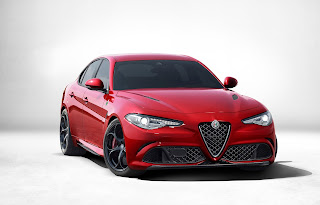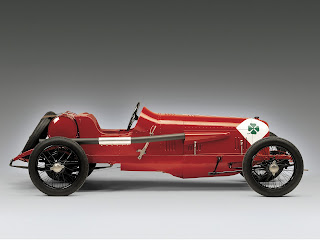Land Rovers are known for their iconic capability of taming the untamed wilderness. The list of such wilderness tamers is comprised of the Defender, the Discover and the mighty Ranger Rover. However, the same can’t be said for the Land Rover Range Rover Evoque. This particular baby Range Rover has been designed to tackle more of the urban jungle.
 |
| Land Rover Range Rover Evoque Convertible |
The Evoque is easily maneuverable in tight confines and quite pleasant on the highway. For the last four years the Evoque has been on sale as a four-door or two-door model. Starting from next year an all-new option is joining the Evoque family; the all-new Convertible.
 |
| Four door Evoque |
The Range Rover Evoque Convertible retains the elegant design proportions of the five-door and coupe derivatives with its acoustically-lined fabric roof open or closed. Interior volume and luggage capacity have been maximized for cargo versatility regardless of the roof's position.
 |
| Design lines from the Evoque coupe are retained |
Looks
Gerry McGovern’s team have retained the bold and progressive exterior design of the Range Rover Evoque with the convertible roof system open or closed. A sophisticated fabric roof with tension-bow architecture creates a defined silhouette that remains faithful to the original design of the vehicle, while the Z-fold mechanism folds into the rear bodywork for a sleek, uncluttered appearance.
New frameless doors have also been developed to ensure a clean profile when the roof is stowed. A dynamic front grille with enlarged geometric mesh area, vent surrounds and a selection of six alloy wheel designs and finishes, ranging from 18- to 20-inches adds further design differentiation between convertible and fixed-roof models.
 |
| With the roof up |
Whether optioned with Halogen, Xenon or LED headlamps, the Range Rover Evoque Convertible is equipped with LED tail lamps and LED daytime-running lights (DRLs) as standard. For additional visual impact, both front and rear DRLs are automatically illuminated when the ignition is activated.
Despite appearing identical to Range Rover Evoque coupe from bottom up to the waistline, the bodywork behind the front doors has been substantially re-engineered to accommodate the stowed roof mechanism. The roof lowers in just 18 seconds and rises in 21 seconds when the roof button on the center console is pressed. It also allows all four windows to be simultaneously raised or lowered for maximum convenience.
 |
| Profile with the roof down |
Once the roof is lowered, discreet hinged panels located at the rear of the interior fold flush to conceal the mechanism, ensuring the vehicle's contemporary lines are retained for a clean and uncluttered appearance. A Roll-over Protection Device (RPD) features a deployable roll-over protection system hidden in the rear quarter panel. The RPD is designed to automatically deploy two aluminum bars in 90 milliseconds in the unlikely event of a roll-over situation, to create a potential protection space for occupants.
 |
| A little different form the standard Evoque Coupe and four door |
The upper portions of the rear fenders have been carefully redesigned to seamlessly integrate with packaging requirements of the Range Rover Evoque Convertible, while an all-new boot and rear spoiler have been engineered to compliment the design. The rear spoiler houses the LED stoplight and optimizes aerodynamics, while the innovative boot hinge mechanism allows for a larger opening, allowing for easy storage and removal of items.
 |
| Off-road qualities with open top enjoyment |
Performance
Behind the dark meshed front grill is a 2.0-litre heart, pumping out 178 kW (240 hp) and 340 Nm of torque. The output accelerates the Land Rover Range Rover Evoque Convertible from 0-100km/h in 7.8 seconds. A ZF 9-speed transmission features nine closely staggered ratios for excellent acceleration to a top speed of 180 km/h.
 |
| Luxurious cockpit |
When the ignition is activated, the rotary gear-shift controller with its tactile knurled metal finish rises from the center console. The driver can opt to leave the transmission in automatic mode, allowing the Adaptive Shift Strategy to intelligently anticipate driver behavior. Alternatively, gears can be manually selected via steering-wheel-mounted paddle shift interface for ultimate control.
 |
| Aggressive front |
Drivetrain
The Range Rover Evoque Convertible is equipped with a variety of standard Land Rover off-road technologies, including the proven Terrain Response system. Terrain Response tailors steering, throttle, transmission, center-coupling and braking/stability response to the terrain via four driver-selectable settings: General; Grass/Gravel/Snow, Mud and Ruts; and Sand. Standard on the Range Rover Evoque Convertible, Hill Descent Control (HDC) is designed to assist the driver with controlled descents of difficult slopes by maintaining a constant speed and applying braking separately to each wheel. Hill Start Assist (HSA) is designed to prevent the vehicle from rolling backwards as it pulls away on an incline while Gradient Release Control (GRC) is designed to prevent the vehicle accelerating too quickly on a steep incline if the driver inadvertently releases the brake.
 |
| Luxurious interior |
Interior
The Range Rover Evoque Convertible features a spacious and contemporary four-seat interior defined by luxury materials and soft-touch surfaces. The strikingly minimalist dashboard architecture contrasts the bold horizontal sweep of the instrument panel with the dynamic vertical rake of the center console. All Range Rover Evoque Convertible models feature fixed twin rear seats, with a central bolster, and revised quarter trim speakers. Ambient lighting subtly enhances the premium feel of the interior in the Range Rover Evoque Convertible especially at night.
 |
| Rear seating |
The infotainment system consists of a 10.2-inch capacitive touch-screen with a Solid State Disc (SSD) for faster response times. The screen also doubles up as a control for climate control, telephone and reserve camera. The standard 380W Meridian Digital Sound System features 10 speakers and a dual-channel subwoofer delivering exceptional definition. For the ultimate in-car technology experience HSE Dynamic models are also available with a premium 12-speaker, 660W surround-sound Meridian audio system, including dual-channel subwoofer and amplifier with advanced digital processing for outstanding sound quality.
 |
| Rear storage space |
Conclusion
The Land Rover Range Rover Evoque Convertible presents a lucrative alternative to what is currently available in the compact crossover segment. The Evoque Convertible’s open top feel and its ability to tackle terrain that might undermine most convertible sports car’s makes it a must have kit for fun and pure enjoyment. Land Rover has also done a great job in ensuring the renowned Evoque design characteristics have remained untouched. Pricing starts at £47500 in the United Kingdom.















































